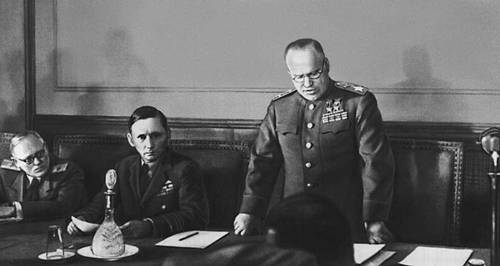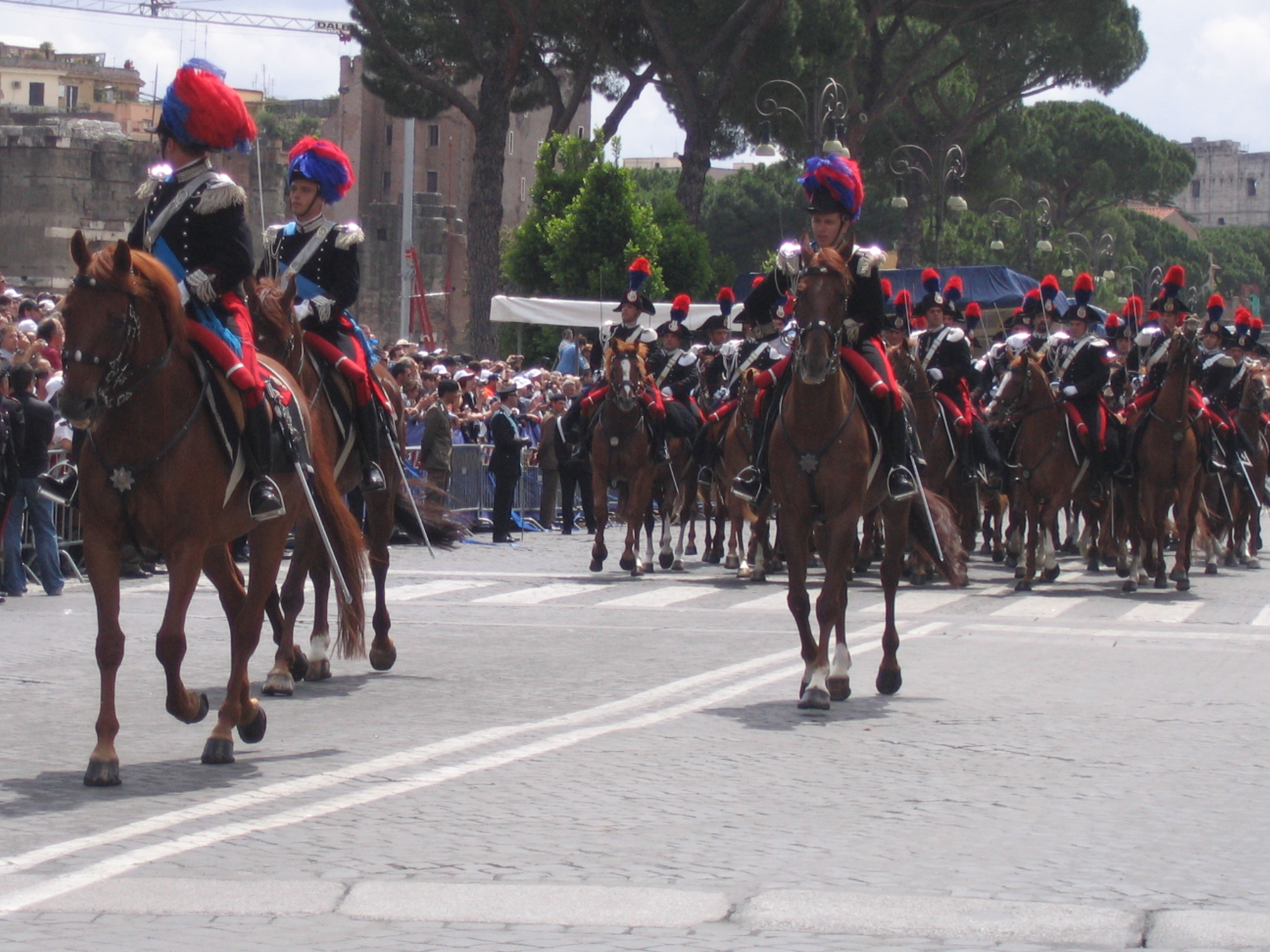|
1905 Square (Yekaterinburg)
1905 Square (Russian: Площадь 1905 годa), also translated as the Square of 1905, is a square in Yekaterinburg, Russia. It is the oldest square in Yekaterinburg. History Imperial era The area arose in the early years of the construction of Yekaterinburg and soon became the central place of trade. In 1745-1747 a wooden Epiphany church was built on the square. In 1771-1774, next to the church on the square, a two-story stone Epiphany Cathedral was built. The square became the center of revolutionary events of the early 20th century. On 1 May 1905, the first political demonstration and rally took place on the square. On 19 October 1905, students and gymnasium students entered the square to discuss the "Highest Manifesto for the Improvement of Public Order", published by Emperor Nicholas II. 1917-1919 On 26 October 1917, the Bolsheviks declared victory in the October Revolution from the area here. The square was inaugurated with its current name days later, when the newly app ... [...More Info...] [...Related Items...] OR: [Wikipedia] [Google] [Baidu] |
1905 Russian Revolution
The Russian Revolution of 1905,. also known as the First Russian Revolution,. occurred on 22 January 1905, and was a wave of mass political and social unrest that spread through vast areas of the Russian Empire. The mass unrest was directed against the Tsar, nobility, and ruling class. It included worker strikes, peasant unrest, and military mutinies. In response to the public pressure, Tsar Nicholas II enacted some constitutional reform (namely the October Manifesto). This took the form of establishing the State Duma, the multi-party system, and the Russian Constitution of 1906. Despite popular participation in the Duma, the parliament was unable to issue laws of its own, and frequently came into conflict with Nicholas. Its power was limited and Nicholas continued to hold the ruling authority. Furthermore, he could dissolve the Duma, which he often did. The 1905 revolution was primarily spurred by the international humiliation as a result of the Russian defeat in the Russo-Japa ... [...More Info...] [...Related Items...] OR: [Wikipedia] [Google] [Baidu] |
Boris Yeltsin
Boris Nikolayevich Yeltsin ( rus, Борис Николаевич Ельцин, p=bɐˈrʲis nʲɪkɐˈla(j)ɪvʲɪtɕ ˈjelʲtsɨn, a=Ru-Boris Nikolayevich Yeltsin.ogg; 1 February 1931 – 23 April 2007) was a Soviet and Russian politician who served as the first president of the Russian Federation from 1991 to 1999. He was a member of the Communist Party of the Soviet Union from 1961 to 1990. He later stood as a Political Independent, political independent, during which time he was viewed as being ideologically aligned with liberalism and Russian nationalism. Yeltsin was born in Butka, Russia, Butka, Ural Oblast. He grew up in Kazan and Berezniki. After studying at the Ural State Technical University, he worked in construction. After joining the Communist Party, he rose through its ranks, and in 1976 he became First Secretary of the party's Sverdlovsk Oblast committee. Yeltsin was initially a supporter of the ''perestroika'' reforms of Soviet leader Mikhail Gorbachev. He lat ... [...More Info...] [...Related Items...] OR: [Wikipedia] [Google] [Baidu] |
Vladimir Lenin
Vladimir Ilyich Ulyanov. ( 1870 – 21 January 1924), better known as Vladimir Lenin,. was a Russian revolutionary, politician, and political theorist. He served as the first and founding head of government of Soviet Russia from 1917 to 1924 and of the Soviet Union from 1922 to 1924. Under his administration, Russia, and later the Soviet Union, became a one-party socialist state governed by the Communist Party. Ideologically a Marxist, his developments to the ideology are called Leninism. Born to an upper-middle-class family in Simbirsk, Lenin embraced revolutionary socialist politics following his brother's 1887 execution. Expelled from Kazan Imperial University for participating in protests against the Russian Empire's Tsarist government, he devoted the following years to a law degree. He moved to Saint Petersburg in 1893 and became a senior Marxist activist. In 1897, he was arrested for sedition and exiled to Shushenskoye in Siberia for three years, where he married ... [...More Info...] [...Related Items...] OR: [Wikipedia] [Google] [Baidu] |
Communist Party Of The Soviet Union
"Hymn of the Bolshevik Party" , headquarters = 4 Staraya Square, Moscow , general_secretary = Vladimir Lenin (first) Mikhail Gorbachev (last) , founded = , banned = , founder = Vladimir Lenin , newspaper = ''Pravda'' , position = Far-left , international = , religion = State Atheism , predecessor = Bolshevik faction of the RSDLP , successor = UCP–CPSU , youth_wing = Little Octobrists Komsomol , wing1 = Young Pioneers , wing1_title = Pioneer wing , affiliation1_title = , affiliation1 = Bloc of Communists and Non-Partisans (1936–1991) , membership = 19,487,822 (early 1989 ) , ideology = , colours = Red , country = the Soviet Union The Communist Party of the Soviet Union (CPSU),; abbreviated in Russian as or also known by various other names during its history, was the founding and ruling party of the Soviet Union. Th ... [...More Info...] [...Related Items...] OR: [Wikipedia] [Google] [Baidu] |
Victory Day Parades
ukr, Парад Перемоги be, Парад Перамогі , nickname = Victory Parades , observedby = Russia, Belarus, Ukraine, some former Soviet countries , duration = 1 day , frequency = annual , scheduling = same day each year , date = 9 May , celebrations = , observances = Moscow, Minsk, Kyiv, Nur-Sultan, other cities , relatedto = Victory Day Parades ( rus, Парад Победы, r= Parad Pobedy) are common military parades that are held on 9 May in some post-soviet nations, primarily Russia, Kazakhstan, Belarus, and formerly Ukraine. They are usually held to honor the traditional Victory Day holiday. In 2015, the Ukrainian government had renamed the holiday as "Victory Day over Nazism in World War II" as part of decommunization laws. However, even after the change, a vast amount of the populace still honors Ukrainian-Soviet troops who fought in World War II with traditional Victory Day celebrations. Victory Parades as a holiday ... [...More Info...] [...Related Items...] OR: [Wikipedia] [Google] [Baidu] |
Victory Day (9 May)
etc. , nickname = , observedby = Russia and some former states of Soviet Union and Warsaw Pact; Serbia, Israel , duration = 1 day , frequency = Annual , date = 9 May , scheduling = same day each year , celebrations = , observances = , relatedto = Victory in Europe Day Victory Day russian: День Победы, Den' Pobedy uk, День Перемоги, Den' Peremohy be, Дзень Перамогі, Dzień Pieramohi uz, Gʻalaba kuni, Ғалаба куни kk, Jeñis Küni, Жеңіс Күні ka, გამარჯვების დღე, gamarjvebis dghe az, Qələbə Günü, Гәләбә Ҝүнү ro, Ziua Victoriei (Moldovan Cyrillic: Зиуа Викторией) ky, Жеңиш майрамы, Jengish Mayramy tg, Рӯзи Ғалаба, Rūzi Ghalaba hy, Հաղթանակի օրը, Haght'anaki ory tm, Ýeňişlar Harçlaarsiň, Еңишлар Харчлаарсиң is a holiday that commemorates the Soviet victory over Nazi Ge ... [...More Info...] [...Related Items...] OR: [Wikipedia] [Google] [Baidu] |
USSR
The Soviet Union,. officially the Union of Soviet Socialist Republics. (USSR),. was a transcontinental country that spanned much of Eurasia from 1922 to 1991. A flagship communist state, it was nominally a federal union of fifteen national republics; in practice, both its government and its economy were highly centralized until its final years. It was a one-party state governed by the Communist Party of the Soviet Union, with the city of Moscow serving as its capital as well as that of its largest and most populous republic: the Russian SFSR. Other major cities included Leningrad (Russian SFSR), Kiev ( Ukrainian SSR), Minsk ( Byelorussian SSR), Tashkent (Uzbek SSR), Alma-Ata (Kazakh SSR), and Novosibirsk (Russian SFSR). It was the largest country in the world, covering over and spanning eleven time zones. The country's roots lay in the October Revolution of 1917, when the Bolsheviks, under the leadership of Vladimir Lenin, overthrew the Russian Provisional Gove ... [...More Info...] [...Related Items...] OR: [Wikipedia] [Google] [Baidu] |
Revolution Day
Revolution Day or the Day of the Revolution refers to public holidays or remembrance days in various country held in commemoration of an important event in the country's history, usually the starting point or a turning point in a revolution that led to significant political change. * Burkina Faso, January 3 (1966). It relates to the anniversary of the 1966 Upper Voltan coup d'état. See Public holidays in Burkina Faso. * Zanzibar, January 12 (1964). See Zanzibar Revolution. * Egypt, January 25 (2011). Also known as January's Revolution Day. Marks the day of the beginning of the 2011 Egyptian revolution. See Public holidays in Egypt. * Libya, February 17 (2011). Marks the day when Jamahiriya security forces first used live ammunition against Benghazi demonstrators, sparking the civil war. See Public holidays in Libya. * Greece, March 25 (1821). Marks the day when the Greek Revolution was declared. See Greek Independence Day. * Nicaragua, July 19 (1979). Also known as Liberation ... [...More Info...] [...Related Items...] OR: [Wikipedia] [Google] [Baidu] |
Military Parades
A military parade is a formation of soldiers whose movement is restricted by close-order manoeuvering known as drilling or marching. The military parade is now almost entirely ceremonial, though soldiers from time immemorial up until the late 19th century fought in formation. Massed parades may also hold a role for propaganda purposes, being used to exhibit the apparent military strength of a country. History The terminology comes from the tradition of close order formation combat, in which soldiers were held in very strict formations as to maximise their combat effectiveness. Formation combat was used as an alternative to mêlée combat, and required strict discipline in the ranks and competent officers. As long as their formations could be maintained, regular troops could maintain a significant advantage over less organised opponents. Nevertheless, military parades are not to be confused with the military show of force. Although the firepower of breechloading rifles an ... [...More Info...] [...Related Items...] OR: [Wikipedia] [Google] [Baidu] |
New Year's Eve
In the Gregorian calendar, New Year's Eve, also known as Old Year's Day or Saint Sylvester's Day in many countries, is the evening or the entire day of the last day of the year, on 31 December. The last day of the year is commonly referred to as “New Year’s Eve”. In many countries, New Year's Eve is celebrated with dancing, eating, drinking, and watching or lighting fireworks. Some Christians attend a watchnight service. The celebrations generally go on past midnight into New Year's Day, 1 January. The Line Islands (part of Kiribati) and Tonga, in the Pacific Ocean, are the first places to welcome the New Year, while American Samoa, Baker Island and Howland Island (part of the United States Minor Outlying Islands) are among the last. By region Africa Algeria In Algeria, New Year's Eve (french: Réveillon; '' ar, Ra’s al-‘Ām'') is usually celebrated with family and friends. In the largest cities, such as Algiers, Constantine, Annaba, Oran, Sétif, and Béjaïa ... [...More Info...] [...Related Items...] OR: [Wikipedia] [Google] [Baidu] |
Innocent Of Alaska
Saint Innocent of Alaska (August 26, 1797 – March 31, 1879, O.S.), also known as Saint Innocent Metropolitan of Moscow (Russian: Святитель Иннокентий Митрополит Московский) was a Russian Orthodox missionary priest, then the first Orthodox bishop and archbishop in the Americas, and finally the Metropolitan of Moscow and all Russia. Remembered for his missionary work, scholarship, and leadership in Alaska and the Russian Far East during the 19th century, he is known for his abilities as a scholar, linguist, and administrator, as well as his great zeal for his work. As a missionary priest he took his wife and family with him. In these territories he learned several languages and dialects of the indigenous peoples. He wrote many of the earliest scholarly works about the native peoples of Alaska, including dictionaries and grammars for their languages for which he devised writing systems; also, he wrote religious works in, and translated ... [...More Info...] [...Related Items...] OR: [Wikipedia] [Google] [Baidu] |






